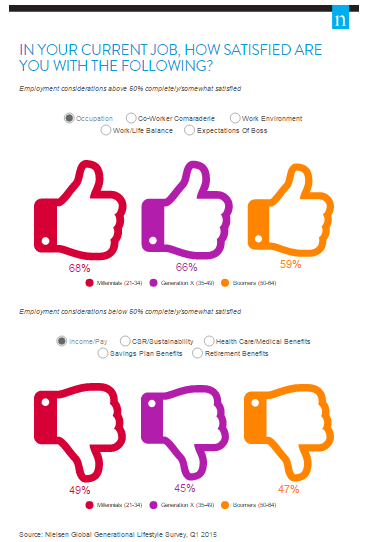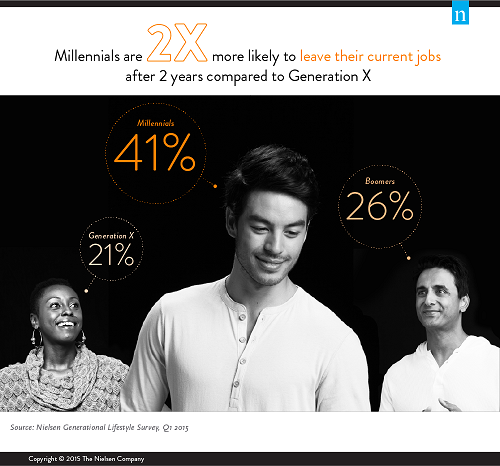
 Whether we like it or not, working is a fact of life for most of us. As the saying goes, “A happy employee is a productive employee.” And more productivity leads to higher profits. So we asked Millennials, Generation Xers and Baby Boomers around the world to think about their jobs and tell us how satisfied they are with everything from compensation and workplace comradery to job loyalty. Across a sample of respondents from 60 countries who said they are currently employed, satisfaction levels highlight workplace trends worth paying attention to.
Whether we like it or not, working is a fact of life for most of us. As the saying goes, “A happy employee is a productive employee.” And more productivity leads to higher profits. So we asked Millennials, Generation Xers and Baby Boomers around the world to think about their jobs and tell us how satisfied they are with everything from compensation and workplace comradery to job loyalty. Across a sample of respondents from 60 countries who said they are currently employed, satisfaction levels highlight workplace trends worth paying attention to.
In this fourth of a five-part series about the differences between how generations live, eat, play and save, we focus on how consumers work.
WORK LIFE WAYS AND WOES
Among 10 job-satisfaction factors, more than half of global Millennials, Generation X and Baby Boomer respondents are satisfied with their occupations, work environment, co-workers, work/life balance and boss—and sentiment mostly increases with age. On the flip side, and perhaps not surprisingly, less than half are satisfied with income and other medical, retirement and savings-plan benefits—and sentiment largely declines with age.
How can employers help create a better balance between work and compensation perceptions? A little praise can go a long way. And rewards and compensation do not always need to be monetary. Creating a workplace environment of mutual respect and recognition helps employees feel valued.

IS JOB LOYALTY A THING OF THE PAST?
The days of employees spending their entire career with one employer are likely over. That sentiment rings especially true with younger respondents, as Millennials are roughly two times more likely to leave a job after two years, 1.5 times more likely after five years, and half as likely to stay after 10 years , compared with Gen X and Baby Boomer respondents.
From recruitment and job training costs, employee loyalty is vital for successful business operations. Build a sense of job ownership with employees by making them an integral part of team decisions. Diverse thinking and attitudes leads to better—and usually more creative–ideas.

